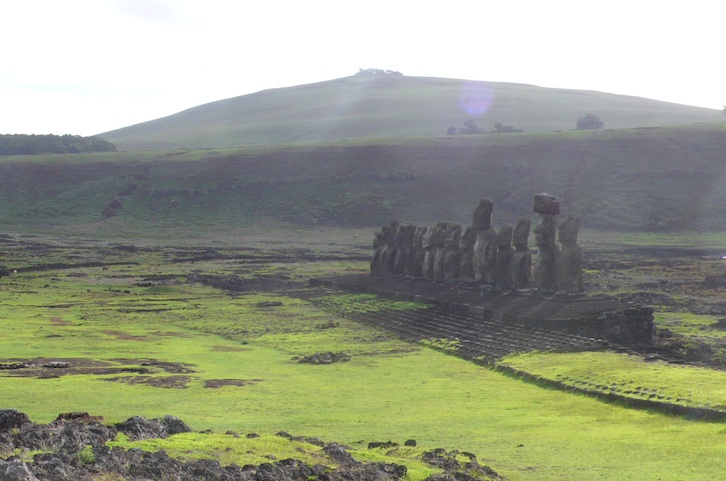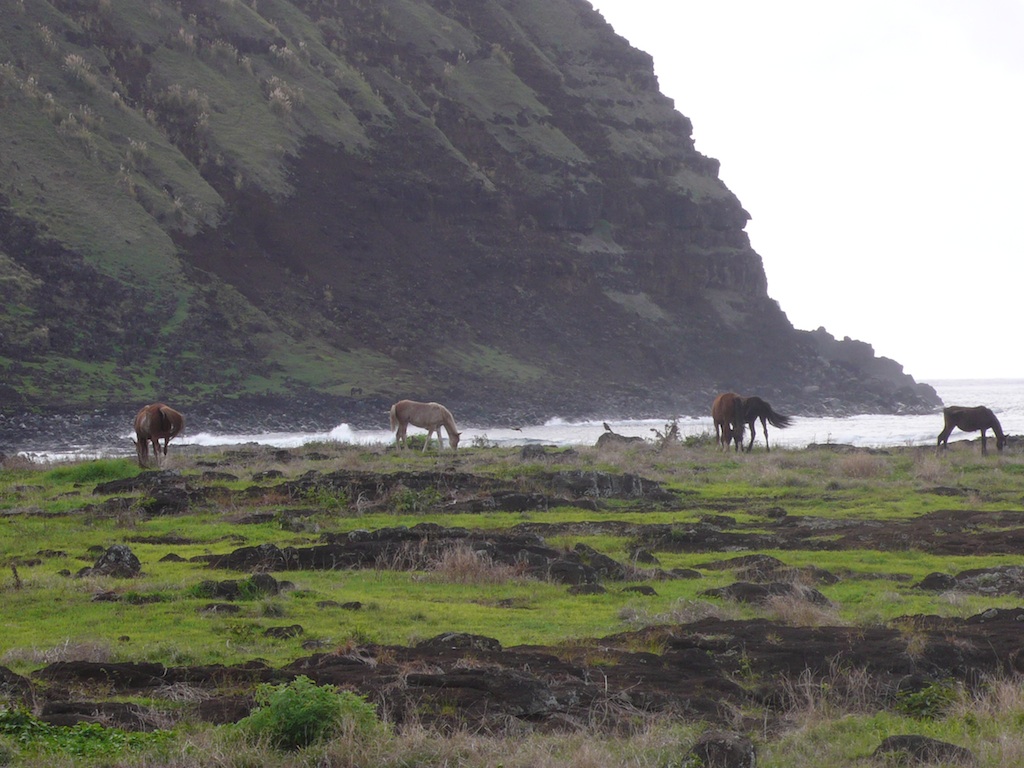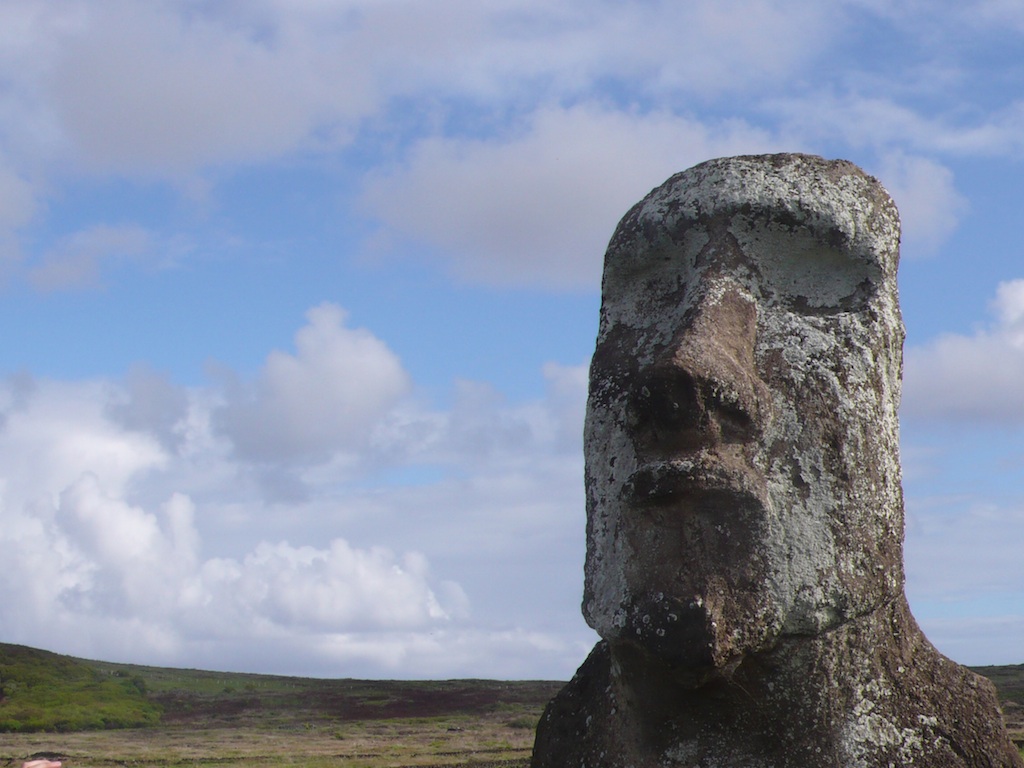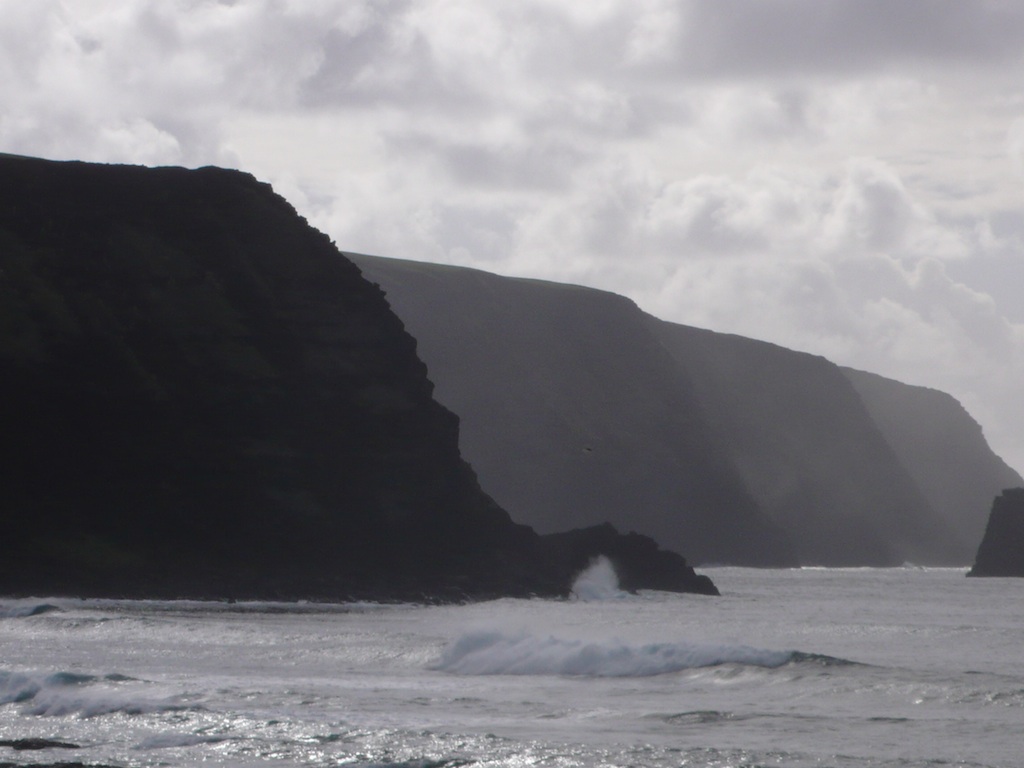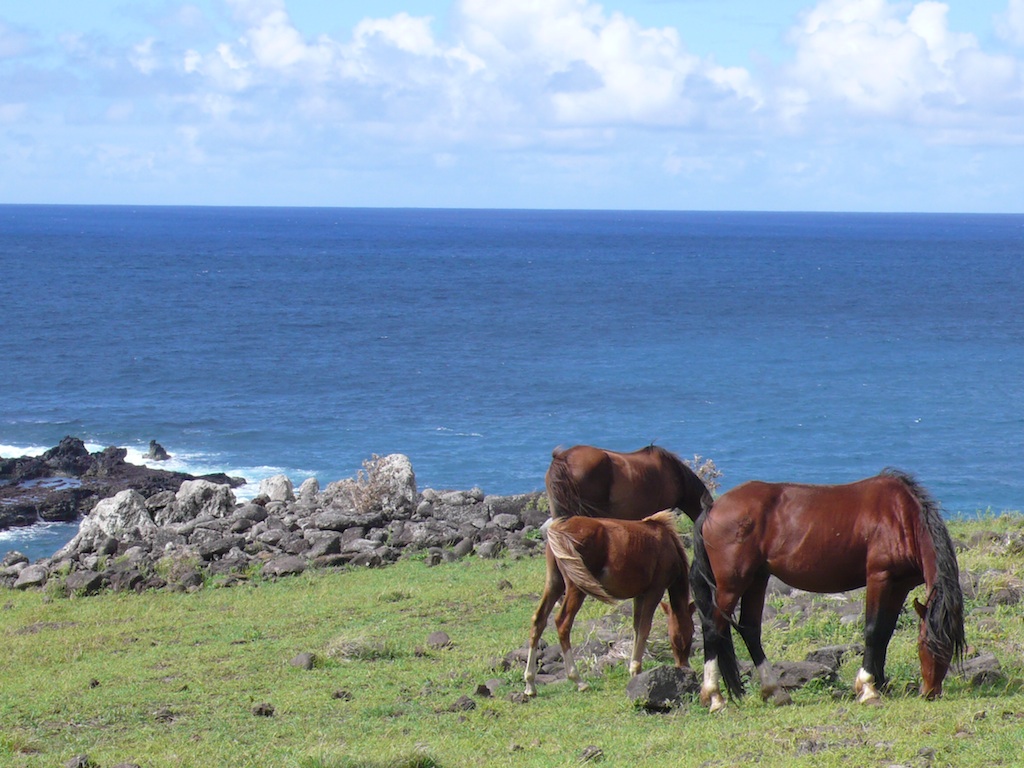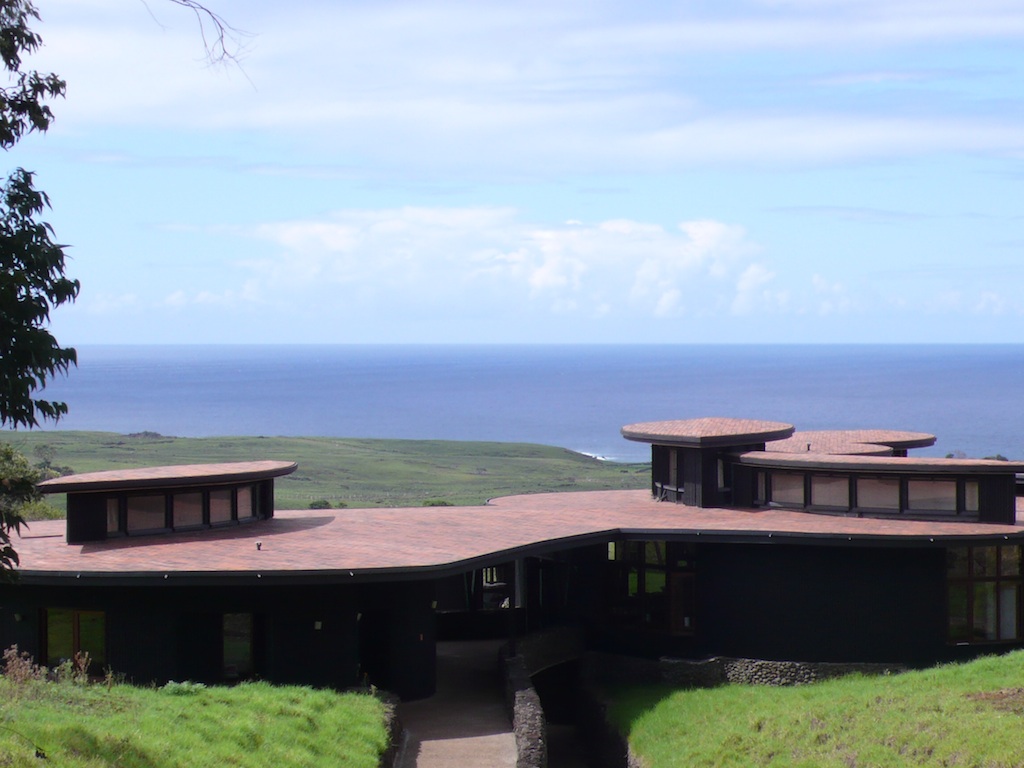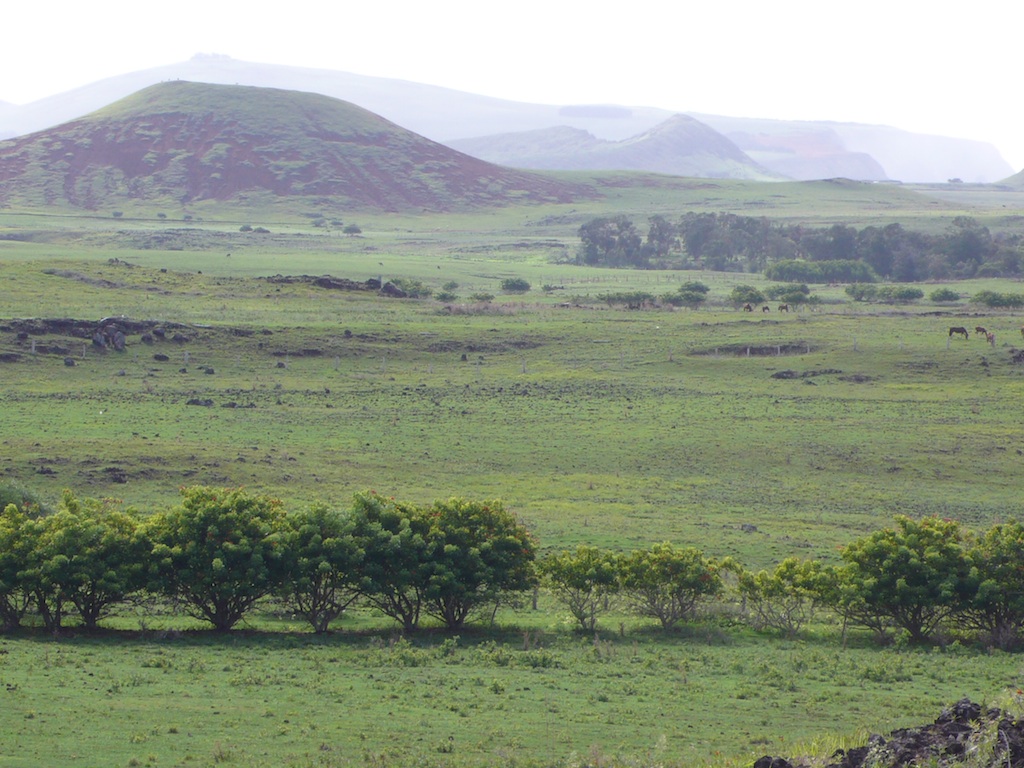Islands generate interiority – and so perhaps it’s not surprising that once-remote isles have been discovered through literature. Published in 1947, James Michener’s Tales of the South Pacific turned the Solomon Islands into a Rodgers and Hammerstein Broadway musical, and Michener’s Hawaii (1959) was arguably one cause behind the tourist juggernaut that subsequently engulfed the Hawaiian Islands. As for Peter Jackson’s films of J.R.R. Tolkien’s Lord of the Rings trilogy, they were all filmed on New Zealand, making that island the latest mandatory stop for inveterate travelers.
Ah, but then there’s Easter Island, where Norwegian explorer and writer, Thor Heyerdahl led the first archeological expedition in 1955-56. And yet in spite of Heyerdahl’s best-selling book The Kon-Tiki Expedition (1948) and the subsequent Academy Award-winning documentary Kon-Tiki (1951), Easter Island (known as Rapa Nui to the locals) has yet to experience explosive tourist growth and has, instead, maintained its remoteness and mystique in a world that grows ever more connected (and crowded) with every travel posting.
Located more than two thousand miles from the American continent, Rapa Nui (created three million years ago from three volcanoes) is the easternmost point of the so-called Polynesian triangle, formed with New Zealand and Hawaii. And again, to emphasize the island’s remoteness, consider that each side of that triangle is roughly the distance between New York and Moscow.
Until recently, getting to Easter Island meant flying to Santiago, Chile (approximately twelve hours from New York) and then boarding another plane for a five-hour flight into the middle of the Pacific Ocean. Now, with the inauguration of LAN Airlines new Lima-to-Easter Island service, it’s possible to leave the States on a red-eye, and then, given the time change, land on Easter Island in time to watch the sun rise.
Founded in 1929, the Chilean company, LAN Airlines, is Latin America’s leading international carrier with a slew of airline industry awards – as well as a history of LGBT outreach and accolades. The recipient of LGBT awards and nominations, including Logo’s “TripOut Gay Travel Awards,” LAN recently purchased Colombia’s Aires and increased the number of flights to the Galapagos Islands, another popular LGBT destination.
Premium Business class on LAN means seats that recline completely, forming a bed 23 inches by 73 inches, on top of which is placed a snow white duvet, along with a plush, full-size pillow, thereby insuring a restful sleep – without a single Ambien. Before sleep, however, there are a plethora of entertainment options and a three-course meal with Chilean wines, served on white linens, with proper cutlery – and, what with the attentive service by a staff with the kind of grace and elegance that one associates with dancers from the American Ballet Theatre, it’s entirely possible that sleep might be the last thing on your mind.
But sleep you must, for when you land at Mataveri International Airport on Easter Island at five-thirty in the morning, you’ll walk off the plane, down the steps to the tarmac – onto the volcanic island often regarded as the most remote in the world.
As with much of Rapa Nui’s history, the island’s original name remains a mystery, although three possibilities exist, including translations meaning “navel of the world,” “the womb,” or “eyes that watch the sky.” In other words, according to the ancients, Rapa Nui is the center and the soul of the world – and its mystical spell becomes almost immediately apparent.
It was more than 1,4000 years ago that the first Polynesians arrived on double-vesseled canoes, initiating a culture that is, today, most notable for the nearly 900 moai (pronounced MO-eye) that populate the island. Made from volcanic rock, and averaging about twenty feet in height, the moai statues are the subject of much speculation with very few definitive answers – and yet, unlike Pompeii or other lost civilizations that preserve a moment in time, the vestiges of Rapa Nui’s indigenous culture form an historical continuum, leaving it to us to fill in the missing blanks.
Why were the moai carved? A series of indecipherable hieroglyphics have daunted anthropologists for decades. And what caused the Rapa Nui people to cease production of the moai? And why did the Rapa Nui destroy what they’d worked so long to create? Hypotheses abound, seemingly bolstered by archeological evidence that litters the 63-square mile island. By the 15th century, the moai were demolished and the Rapa Nui culture was in eclipse, which is when the Dutch explorer, Jacob Roggeveen arrived, rechristening the island Easter for the Sunday of his landing.
In more recent history, Easter Island was a massive British sheep farm, during which time the indigenous people were penned in the island’s one town, Hanga Roa – and it was not until 1966 that the Rapa Nui people regained their citizenship and rights.
With vistas like a Constable painting and wild horses grazing across the volcanic grasslands, Rapa Nui often feels like an island lost in time, which is conceivably one reason why UNESCO granted the island world heritage status in 1995. Warm and temperate with an average temperature of 72 degrees, Rapa Nui is well-known for the transparency of its ocean and for the more than 150 species of marine wildlife living in those waters. One in four of those species is found only on Rapa Nui, making the island a sanctuary as well as a Darwinian redoubt. Horses roam freely, often in families, the wind lifting their manes. The breeze shivers the red berries of the African sable as frigate birds swoop and dart overhead.
There are people, too, approximately 3,800 residents, nearly all of them Rapa Nui and most of whom live in Hanga Roa on the island’s sheltered western edge.
From atop Rano Raraku, the moai quarry where scores of moai are scattered down the hill in various states of completion and destruction, the view is towards Ahu Tongariki, the site of the fifteen moai perhaps best-known and most-photographed. Their backs to the sea, the jagged coastal cliffs behind them, the moai fix their gaze toward the island’s interior – as if the answer lies within.
GETTING THERE:
LAN Airlines: Until recently, getting to Easter Island meant flying to Santiago, Chile (approximately twelve hours from New York) and then boarding another plane for a five-hour flight into the middle of the Pacific Ocean.
Now, with the inauguration of LAN Airlines new Lima-to-Easter Island service, it’s possible to leave the States on a red-eye, and then, given the time change, land on Easter Island in time to watch the sun rise.
Premium Business class on LAN means seats that recline completely, forming a bed 23 inches by 73 inches, on top of which is placed a snow white duvet, along with a plush, full-size pillow, thereby insuring a restful sleep – without a single Ambien. Before sleep, however, there are a plethora of entertainment options and a three-course meal, served on white linens, with proper cutlery – and, what with the attentive service by a staff with the kind of grace and elegance that one associates with dancers from the American Ballet Theatre, it’s entirely possible that sleep might be the last thing on your mind.
Exclusively for LAN Airlines, Rapa Nui’s Mataveri International Airport is also a midway point for Papeete, French Polynesia – but once you get a taste of Rapa Nui, you might find yourself too content to leave.
LINK: LAN Airlines Lima-Easter Island service LAN Airlines
WHERE TO STAY:
explora Hotel Posada de Mike Rapu: During the Seventies, when there were very few international travelers wandering through Chile, Pedro Ibanez roamed his native country, traveling to destinations that were both remote and beautiful. These early explorations inculcated in Ibanez an appreciation of the journey itself – and particularly those travels to remote areas, where the landscape provokes psychological clarity.
The founding principle of Ibanez’s company, explora, is the conjoining of nature and indigenous cultures with physical activity – complemented by the comforts of a life well-lived. Explora’s philosophy is that “luxury is in the simple details,” which is brilliantly exemplified in all three of its properties throughout Chile. As Ibanez has remarked, explora is “privileged to be in some of the world’s most beautiful locations – and with privilege comes great responsibility.”
Located fifteen minutes from Rapa Nui’s Mataveri International Airport, explora’s Hotel Posada de Mike Rapu (Mike is pronounced ME-kay) is situated on a hill in the Te Miro Oone area at the island’s center. Built in 2007 on a 23-acre site that has no archeological remains nor any agricultural value, Hotel Posada de Mike Rapu blends into its setting much the way that a moss-covered boulder exists in a woodland setting.
Adhering to the architectural principles espoused by Frank Lloyd Wright (and numerous others), whereby a building becomes one with its environment, architect Jose Cruz Ovalle (winner of Finland’s “Spirit of Nature” award, for wood architecture) has created a building without front or back, which is as approachable from one direction as it is from any other – not unlike that moss-covered boulder.
With a stone base that evokes the ancestral ramparts of the Rapa Nui at Orongo, site of the “Bird Man” competition, Hotel Posada de Mike Rapu is structured like an altar – to nature. Each of the 26 rooms and four suites has a Pacific Ocean view – and all are blissfully free of television. Fitted with pine wood trimmings and featuring earth-colored concrete floors, the rooms average a commodious 350 square feet and include a hydromassage bath and a rainfall shower, and a separate water closet and bidet. The linens are crisp and the beds as plush as you desire after a day spent exploring the native terrain – and the overall feel is that of a great camp lodge from the glory days of the Adirondacks when J.P. Morgan built a private rail car to escape Manhattan for the bucolic pleasures of the mountains.
Throughout your stay, you’ll note the attention to detail that constitutes explora’s definition of luxury: in-house filtered water in a glass pitcher on a nightstand, a bespoke travel kit with house stationery, Belgian dark chocolate bars on the pillow, homemade trail mix and granola bars, supplemental toiletries in a kit bag, an open bar serving sashimi and ceviche, champagne and fruit at the conclusion of an exploration, freshly-squeezed juices during a hike…
And yet what lingers longest about Hotel Posada de Mike Rapu is the overwhelming friendliness and professionalism of the entire staff. Nearly every guide and more than 60% of the explora team are of Rapa Nui ethnicity – and the resultant atmosphere is as relaxing as it is edifying.
Hotel Posada de Mike Rapu is the first lodge in South America to be awarded a LEED certification, which is the just reward for explora’s commitment to sustainability and conservation. Built of volcanic stone and wood from the island, the lodge utilizes an internal lighting system to minimize disruption of the nocturnal ecosystem. The design of the lodge allows for natural airflow, while solar energy heats the Jacuzzi and showers. Rain water filters through the semi-permeable paving, and every water closet has a dual flush system. Even the bedroom slippers are biodegradable.
Transfers, lodging, food, drink, and explorations (on foot, bicycle, and horseback) are included with every stay at Hotel Posada de Mike Rapu. Sojourns commence with a three-night minimum, with four nights recommended – and, truth be told, as soon as you sink into these rhythms, you’ll be conspiring for ways to extend your stay to at least two months. There’s a solar-heated swimming pool, flanked by a Jacuzzi and open area. The ancestral sauna is evocative of a Native American teepee and fragranced by an entire ceiling of eucalyptus branches.
As for dining at Hotel Posada de Mike Rapu, each morning, Chef Rogliano César Zárate utilizes local suppliers to create a smorgasbord of the island’s bounty, including fresh papaya, avocado, fruit jams, cheese biscuits, juices, and sweet breads – while dinner might be purple sweet potato and ricotta ravioli, served with an avocado, watercress and mizuna leaves sauce, the very embodiment of spring. Daily menus are printed in-house for each meal, which highlight the local specialties and the culinary wizardry that Chef Zárate creates in the explora kitchen.
As explora founder Ibanez has remarked, “the essential is what is authentic,” and after a stay at Hotel Posada de Mike Rapu, it’s possible to imagine the impact that this sojourn will have on your own home and your own life. You’ll find yourself thinking about clarifying and simplifying and learning to breathe and see anew. You’ll look longer at what is worthwhile, savor the good and celebrate. “Every journey is also internal” – and a respite at explora’s Hotel Posada de Mike Rapu takes you back to life’s essence.
LINK: explora Hotel Posada de Mike Rapu
WHAT TO DO:
Whatever you want to do is what you will do, which is sort of the modus operandi of explora’s Hotel Posada de Mike Rapu. There are more than twenty-five different explorations offered, either on foot or by bicycle or in the ocean – and all of them provoke wonder and a gaping jaw. These are astounding sights, wonderful and miraculous, and exactly the sort of experience that is meant by the phrase “once in a lifetime.”
Each evening, your Rapa Nui guide will meet with you at the bar or in the lounge and listen to what you want and, subsequently, shape the next day’s activities according to your desires. Every guide is at least bilingual – and all have Wilderness First Responder certification. Most importantly, these are people who know and respect the island of which they are a part and they want to help you to see for yourself the indigenous flora and fauna, as well as the inspirational atmosphere of Rapa Nui.
Apart from the explorations, there is also the solar-heated swimming pool and Hare Taheta, the open-air massage area. You will not be bored, and instead, you will find yourself thinking about relocating to this island on a more permanent basis.
ADDITIONAL INFORMATION:

